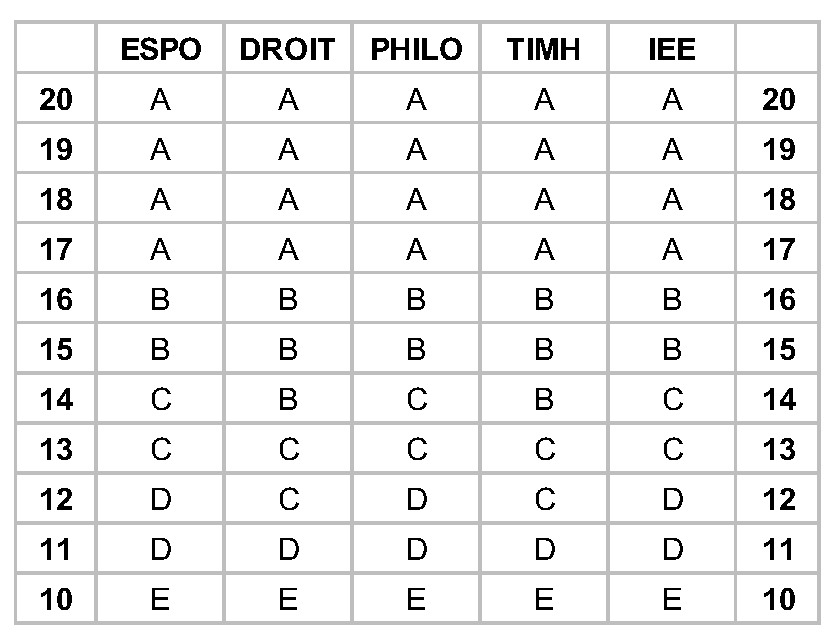| Saint-Louis University - Bruxelles | ||||||||||||||||||||||||||||||||||||||||||||||||||||||||||||||||||||||||||
|
||||||||||||||||||||||||||||||||||||||||||||||||||||||||||||||||||||||||||
|
The European Credit Transfer System (ECTS)
Overview
The aims of the European Credit Transfer System (ECTS) At the beginning of the 1990s, the European Commission wished to enable student mobility across the European higher education area. In order to achieve this, it was necessary to promote mutual academic recognition, between HE institutions, and between countries. More particularly, with the aim of making national qualifications easier to understand in other EU countries, and making it easier to compare them, a common descriptor system for HE programmes was designed. Thus was born the European Credit Transfer and Accumulation System (ECTS).
Defining a‘credit’ Education programmes and their component courses are given values - called credits - that are measured in a consistent way across the European higher education area. The credit value is calculated on the basis of the workload needed to complete the programme or courses. The workload includes all learning activities (such as lectures, practical work, seminars, work placements, self-study and research, examinations). In the French-speaking Community of Belgium, 60 credits correspond to the workload for one academic year. 30 credits normally correspond to a term of study. 1 credit corresponds to around 30 hours of study. Credits are awarded for the successful completion of the target learning outcomes.
Grading systems and ECTS
The final assessment of a course is expressed in the form of a grade between 0 and 20, the threshold for passing being 10/20. The overall assessment of a year or cycle of study is expressed in the same way, the threshold for passing in this case being 10/20 (as from 2014-2015). In all other cases, the final decision rests with the academic jury. The jury reaches its decisions collectively.
As well as numerical grades, an ECTS classification for course grades has been developed: the purpose of this classification is to provide additional information about the student’s performance. However, the aim is not to rank the student within their year group, but to compare their results relative to those obtained by their peers in previous years. The classification is based on the statistical analysis of all the grades obtained across all programmes over the previous 5 years at Saint-Louis and is updated annually. As the following table shows, each numerical grade has an ECTS equivalent, which is calculated according to the principles set out above.
Academic recognition and student mobility
For students participating in an exchange programme (ERASMUS, ERASMUS Belgica or any other programme for which mutual recognition applies), the academic recognition of programme and courses they follow is fundamental. Recognition provides the guarantee that the studies they undertake abroad are equivalent in value to a comparable period of study undertaken at their home university. As each course in each institution is credited with an ECTS value, a learning agreement between the student and the receiving and sending institutions can be established on a common basis of comparison. Moreover, in regard to course assessment, since other universities have established the same sort of grading scale based on the principles described above, the comparison and recognition of marks awarded to students can be achieved in a more objective way.
The programme of courses followed by an international Erasmus student is set down in a learning agreement that is established by agreement with the sending institution’s departmental coordinator. This agreement lists the courses followed by the student at Saint-Louis, as well as the ECTS credits attached to each course.
The European Credit Transfer System is based on the principle of transparency of learning outcomes. At the end the exchange, Saint-Louis forwards the student’s transcript of records to the sending institution’s departmental coordinator. Only the courses specified in the learning agreement appear on the official transcript. By using these two documents Saint-Louis guarantees the full recognition of the Erasmus exchange.
|
|||||||||||||||||||||||||||||||||||||||||||||||||||||||||||||||||||||||||


 Institutional ECTS Coordinator
Institutional ECTS Coordinator